Wild Birds Transform a Woman’s Garden and Life
On September 27, 2013, at 4:50 p.m., what Sharon Sorenson saw outside of her kitchen window made her breathing stop and her hands shake. To most of us, it would look like a small gray bird with touches of yellow. To her it was a vision bordering on the miraculous. Sorenson, who lives just outside of Mount Vernon, Indiana, in the southwestern part of state, had traveled as far as Ohio hoping to catch a rare glimpse of a golden-winged warbler — a small migratory bird with a voice described by some as a trilling, buzzing chirp — yet here it was in her own backyard, taking a quick sip of water before heading into the darkening sky.
You could say this was a case of fortune favoring the prepared, because this bird didn’t just randomly swoop into her yard. Sorenson and her husband, Charles, had been readying for its arrival for nearly 50 years by transforming a rural plot into a bird paradise. The experience inspired a personal quest and a book.
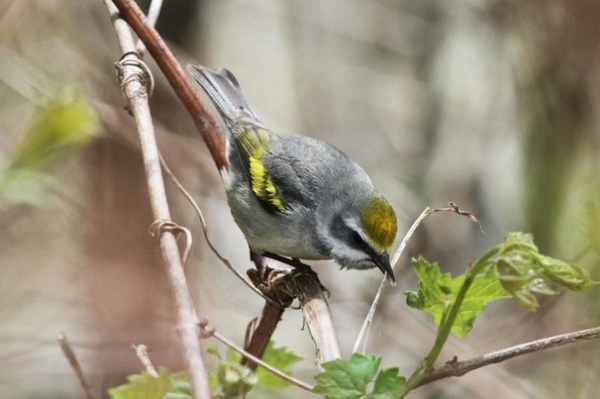
Photos by Charles and Sharon Sorenson
This is a picture of a golden-winged warbler, one of about 100,000 bird photos the couple has taken and logged in an extensive library, but it isn’t the one that surprised Sorenson that evening. On that occasion she was too thrilled to get a good shot.
“It’s my routine during migration months — April and May in spring and mid-August through October in fall — to stop at the kitchen window every time I pass by, probably a dozen or more times a day. Often I stand within 2 feet of the window, a cup of tea in hand, sipping and watching, binoculars immediately at the ready,” she says. “When I spotted the bird, I remember gasping, yelling at Charlie to come quickly, grabbing a camera and, excited at the seeming vision before me, shaking too badly to get a good focus. The bird was there only briefly, long enough to fit a spot among the others, get his drink and head off, probably to Central America or perhaps the northern edge of South America.”
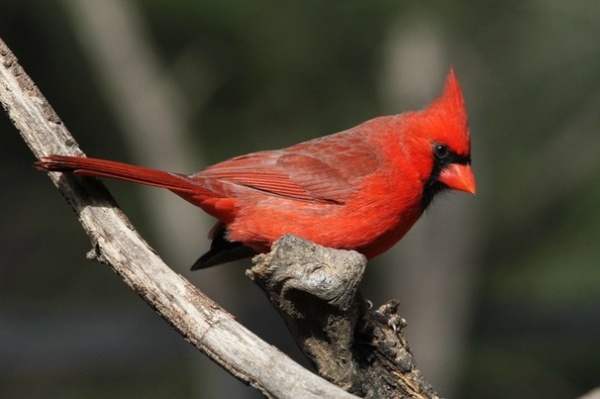
The path that led her to her kitchen window that evening started on a farm near Evansville, Indiana, where she grew up. In those days most people didn’t put up birdhouses or feed the birds, but her parents, Orville and Viola Blaser, did. Viola would feed hummingbirds sugar water by the gallon, and Orville would scatter grain for birds toughing out the often harsh Indiana winters.
“Dad loved all kinds of animals, and he drew my attention to the birds,” Sorenson says. “Back then we didn’t know the real names for them. I grew up calling the northern cardinal [pictured] a red bird. It’s our state bird and probably the most abundant in our winter yard. I’ve counted as many as 56 at a time.”
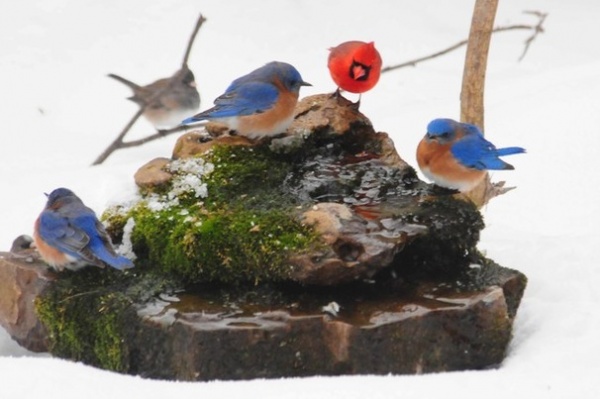
It was a winter event that took Sorenson’s avian interest to a different level. She and Charles had married and had been living in their current house for about a decade when the region was hit by the brutal winter of 1976.
That year the birds were struggling to survive in low temperatures and high snow drifts. In a desperate bid to help them, Sharon dug out a space beneath their bird feeder, scattered some seed and watched in awe as hundreds of birds, including species that she’d never seen before, such as a snow bunting and a horned lark, flocked to her offerings. She decided then and there that she would start logging the names of the birds she spotted in her yard. “I was motivated by a sense of impending doom,” she says.
Over the years, as her zeal for studying and learning about the birds grew, she made her lawn into a friendlier bird habitat — complete with a bubble rock, shown here, that gurgles year round with the help of a submersible heater.
“Putting in the water feature made a big difference in the number of birds that visit our yard, and moving water was necessary for our land to be designated as a certified wildlife habitat by the National Wildlife Federation,” she says. This photo shows a cardinal and a few bluebirds taking advantage of the water earlier this winter.
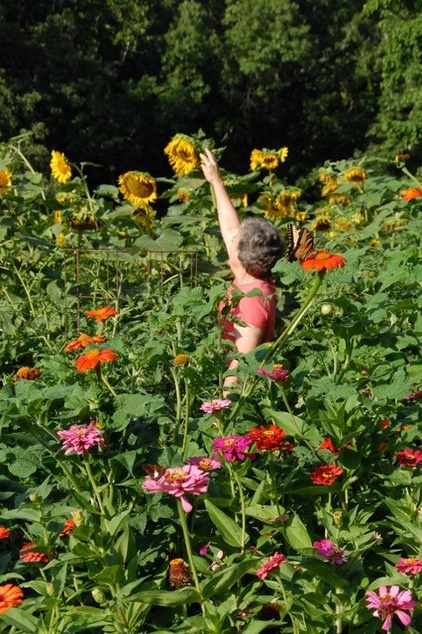
Sorenson has also transformed the yard from 2 acres of grass dotted with a small stand of birch trees and some juniper bushes flanking the driveway into a landscape abundant with plants that produce nectar, seeds, nesting material and shelter.
Here she examines sunflowers that produce seeds beloved by birds, and zinnias, which attract many bugs favored by them.
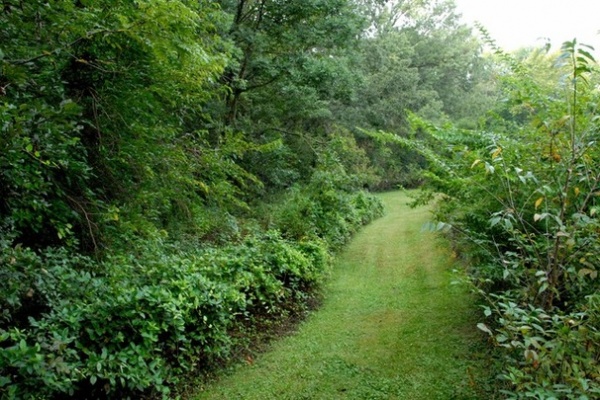
“The change was a very gradual thing. Every year I would plant a new flower bed or additional bushes,” she says.
Now the couple’s mowing is limited to the spaces under the apple trees and grassy paths that lead to bird feeders or observation areas on the lot. In Indiana, where many consider a carpet-like green lawn a badge of honor, this approach could be considered astonishing.
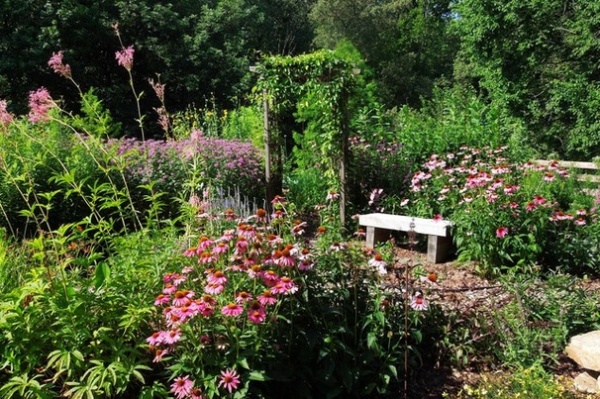
“There’s a difference between unmowed and untended,” Sorenson says. “We keep all the weeds under control by mulching every year. In the fall we gather bagged leaves by the truckload and put them through the shredder to turn them into mulch. It’s wonderful for the soil, and it is home to bugs the birds need to be happy and healthy.”
In some places, such as smaller garden paths, she uses wood chips.
Having sparkling windows is a similar sign of home pride in many households. Although Sorenson does wash her windows twice a year, she doesn’t keep them crystal clear. This helps reduce the number of birds fatalities. “About a billion birds die each year after crashing into windows,” she says. “To me it’s worth it to have windows that are a little soiled to reduce that number.”
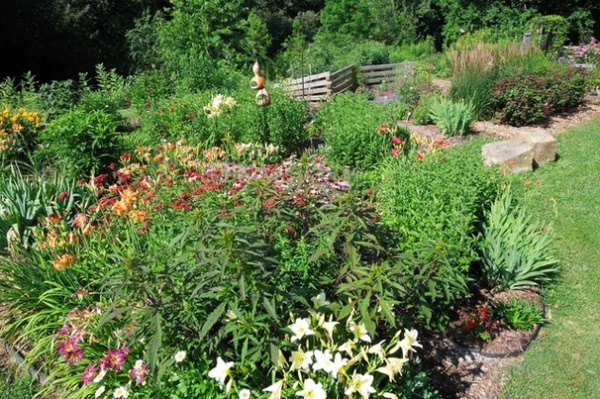
Sorenson says she hasn’t used pesticides in her garden for at least 20 years and puts an emphasis on native plants. “Almost anything that goes in now must be native, because that’s what our local birds recognize as food,” she says.
She keeps wilder parts of the garden defined with features such as a split-rail fence, seen here at the upper right. “Overall it looks like a park, and not many people consider a park untidy or unpleasant,” she says.
Consider new ways to garden
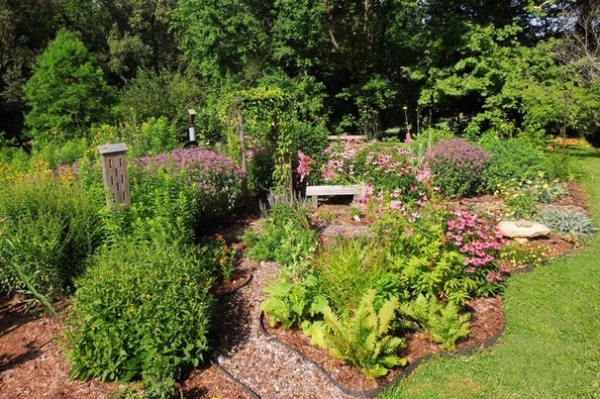
The basic pattern of blooming in Sorenson’s garden follows this color rhythm: lavender (spring), yellow (summer) and lavender again (fall). In her beds you will find flowers planted with a bird buffet in mind: coneflower (Echinacea), goldenrod (Solidago), prairie coneflower (Ratibida) and coral bells (Heuchera), to name a few.
Among the flowers you can see a butterfly box, which Sorenson says seems to be functioning only as an ornament, and a birdhouse. “We have about 16 on our property. The one you see here is home to about three broods of bluebirds each year,” says Sorenson. “It’s important to put predator guards on them, or you end up making them lunch boxes for raccoons and snakes.” The Sorensons fashion their own guards out of lengths of stovepipe 8 inches in diameter.
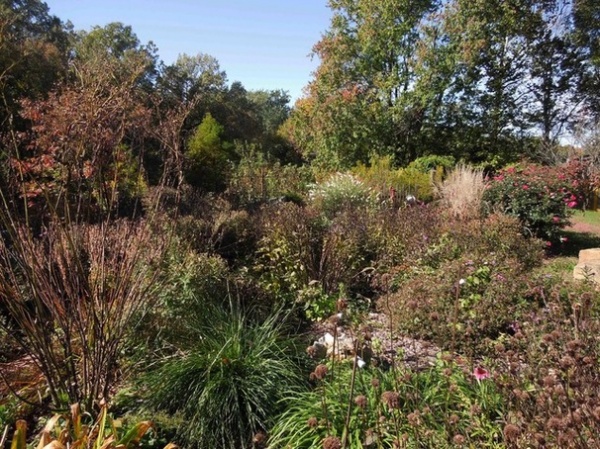
When the natives inevitably die back during the fall and winter, Sorenson leaves them for cold-weather birds. “I don’t clean up until spring,” she says. “Like many people, I used to be all about bird feeders and seed. It is good to put out feeders, but that should not be the first or the only thing you do for the birds. Many birds will never perch on my feeders, but I’ve seen flocks of them cleaning up the seeds on my plants.”
7 Reasons to Not ‘Clean Up’ Your Fall Garden
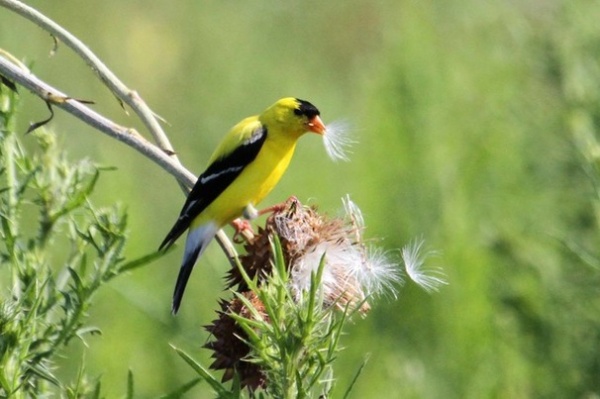
The concept of using native plants for birds is illustrated by this shot of an American goldfinch gathering nesting material. “The goldfinches line their nests with the downy fluff,” says Sorenson. “This bird needs native thistles for the seeds and fluff. If we don’t have them, we don’t have the birds.”
Sharon says that in a populated and manicured world, having a familiar and bountiful habitat is necessary for birds. For migrating birds, yards like hers serve as waystations. “Think about it: If you were driving across the country, you would need places to stop, eat and rest. If you ran out of gas and couldn’t get to the next rest stop, you’d pick up your cell phone and call AAA,” she says. “These birds don’t have that option as they fly from places like Brazil to destinations such as northern Michigan. If they can’t find a place to feed and rest, they will die.”
Naturalist Alan Gehret, curator of collections at the John James Audubon State Park Museum & Nature Center in nearby Henderson, Kentucky, agrees. “Over the last 10 to 20 years, we have seen some bird species populations drop dramatically — some as much as 50 percent. This is largely due to loss of habitat and alteration in their environment,” he says. “When it comes to creating habitats, every little bit helps. When someone creates a place like the Sorenson’s, it provides safe havens for birds and makes a difference in their survival.”
How to Find the Right Native Plants for Your Yard
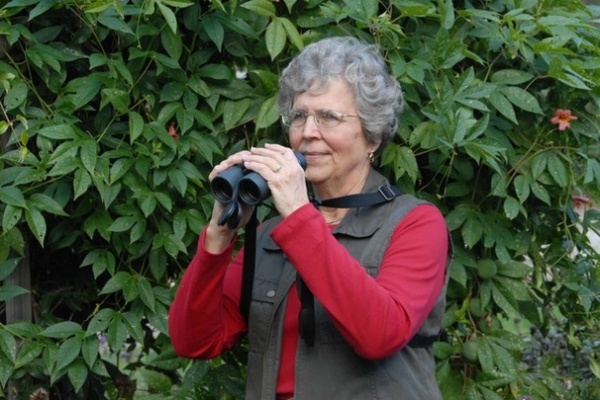
As she slowly changed her lawn into a bird habitat, Sorenson’s career evolved. For 22 years she taught high school English and served as the department chair in Evansville’s largest high school. Then she wrote for several publishing companies, mainly authoring textbooks. For the past 11 years she’s written a column about birds for the Evansville Courier & Press.
“Only in retirement did my lifelong interest have time to really blossom,” she says. That flowering was aided by The Big Year: A Tale of Man, Nature, and Fowl Obsession, a book by Mark Obmascik that documents Greg Miller’s quest to break birding records during his Big Year (a competition among birders to try and see or hear as many species as possible in 12 months). The book spawned The Big Year, a movie starring Owen Wilson and Jack Black (who plays Miller). “We were surely the first in line to see it when it came to town,” says Sorenson.
The buzz around the book and movie planted an idea in Sorenson’s mind: Why not stage a personal Big Year in her backyard? In 2010 she did it.
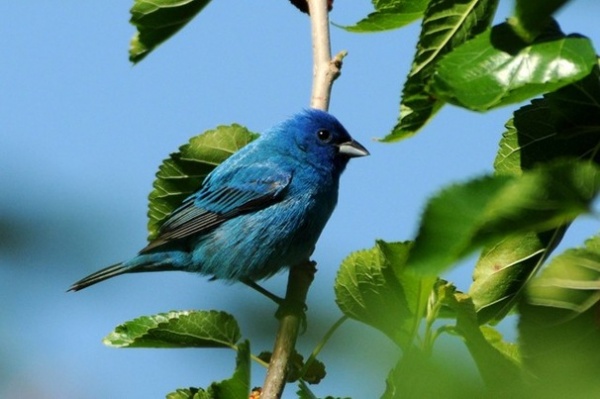
“I never considered a Big Year beyond my own backyard. I’m not one to chase birds, but prefer to study them at length in their habitats and try to understand why a given bird is in a given place at a given time,” she says. “From my perspective, there’s something artificial about trying to see as many birds as possible for the sake of listing them.”
She spent 2010 looking for and recording birds in her own yard, searching for species such as this brilliantly colored indigo bunting, a bird that migrates to North America from Mexico and Central America to nest.
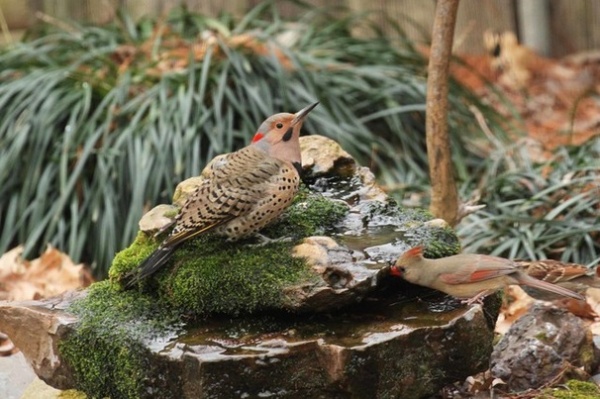
During her quest Sorenson spent an enormous amount of time on her own property. “I went out three days a week, every week,” she says. “I did a lot of walking around, but my husband says what I call walking in the yard is what other people would call standing still.”
Her method is simple: step, stop, listen and look. She says the notion that birds sing with joy is a fallacy. “Birds only sing for love and war,” she says. “They are either trying to attract a mate or defend their territory.”
Therefore a lot of her observation consisted of looking for movement in the trees, in the brush or at the water feature — where, in this photo, a shafted northern wood flicker, a type of woodpecker, is enjoying a cool drink.
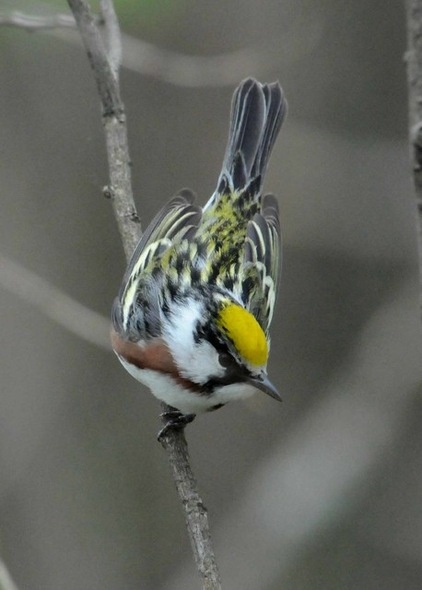
The practice took discipline. “It was hard work, going out multiple times a day week after week,” she says. “At times it would be boring, especially during the summer and winter, when you don’t have much variation. It was a lot more exciting during spring and fall migration.”
During those busy months, she might see birds such as the chestnut-sided warbler pictured here. “In the fall they aren’t so attractive. In the spring they have beautiful colors,” she says.
At the end of the 52 weeks, Sharon had seen 114 species. “There should have been more,” she says with a touch of regret in her voice.
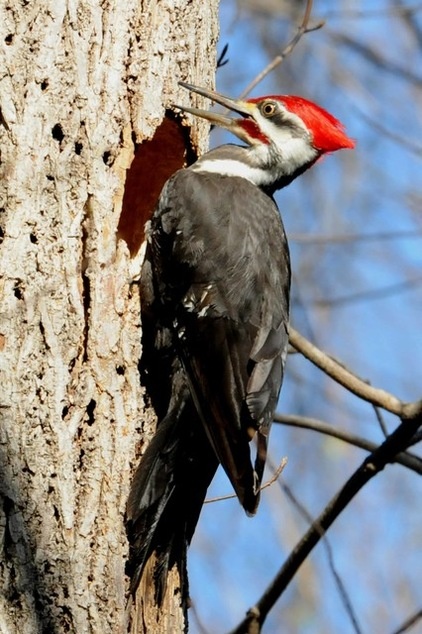
But the hard work paid off in an education she couldn’t glean from her library full of books. “Seeing things for myself this way made everything more obvious to me,” she says. “I started to see more general behavior patterns.”
Some of the birds she observed closely were woodpeckers of all kinds — including pileated woodpeckers such as this one. To attract the wood-boring birds, the Sorensons allow dead trees to stand after they remove unstable limbs. They act as fruit baskets, welcoming the insect-loving avians to the yard.
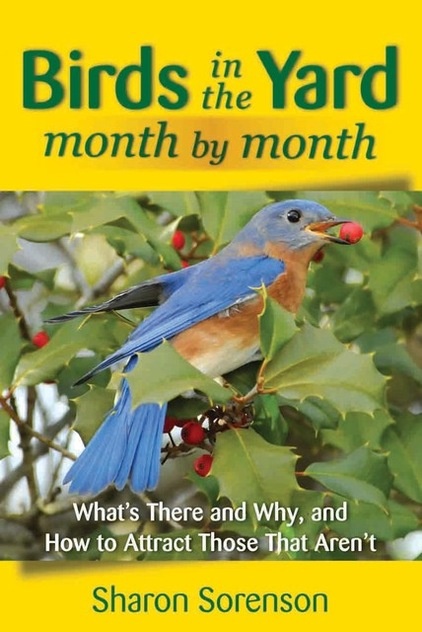
Sorenson ended her 12 months of observation with knowledge and a stack of notes that she would turn into Birds in the Yard Month by Month: What’s There and Why and How to Attract Those That Aren’t. Focusing on the states east of the Rockies, it details exactly how to create a bird-friendly yard and what species to watch for from January through December.
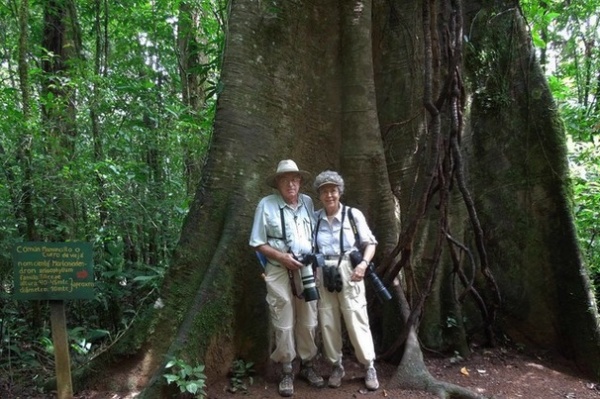
You could say that Sorenson has been rewarded for the effort she has put into learning and caring for birds. For one thing, it has enriched her marriage. “I brought an interest in birds to the table, and he brought an interest in photography,” she says. “Working together for a common goal, I’ve learned something about photography, and Charles has learned about birds.”
The couple has traveled to 10 countries with cameras and binoculars in hand. Here they are seen in Costa Rica on a birding expedition.
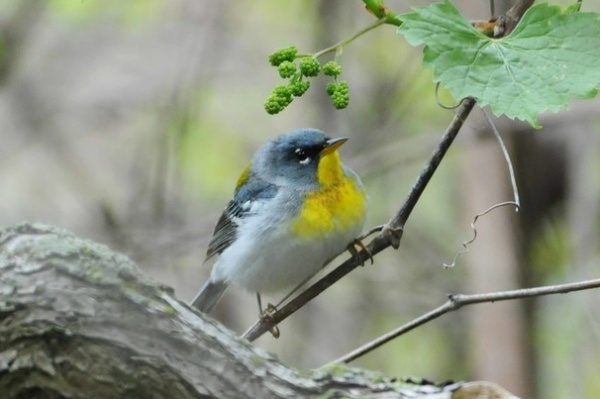
And studying birds such as this northern parula has given her peace of mind. Right before retiring, Sorenson suffered breast cancer. Although it was detected early and today she is cancer free, she spent weeks at home during treatment. “It’s a tricky thing to explain, but during that time I would look at the birds and imagine what they were doing to make it. I would think about how they were managing to feed their young or ride out a storm,” she says. “I had a certain amount of identification with them and what they were doing to survive.”
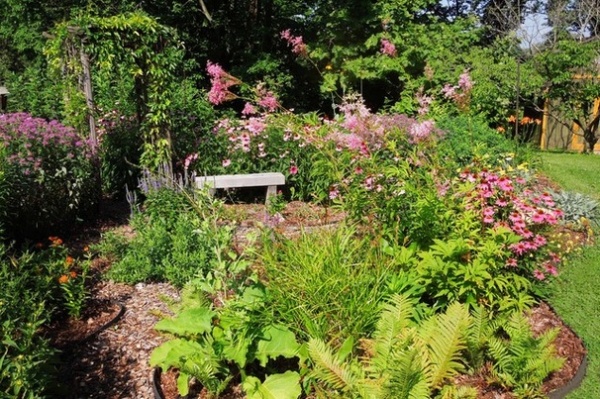
“Birding has helped me deal with a lot of crises and personal issues,” she says. “Somehow, if I could sit down and watch the birds, I could always put things in perspective.”
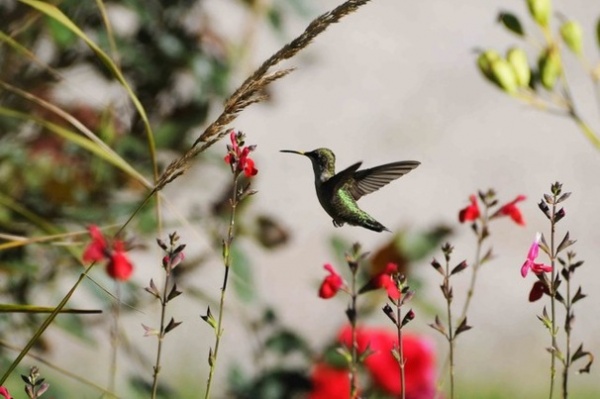
With her recent book, an information-packed website and a busy speaking schedule, Sorenson may have her biggest years ahead. Regardless, her devotion to the birds and the garden has given her calm, resolve and a new moniker. “Folks call me ‘The Bird Lady,’” she says.
More: Explore the Native Plants section on Houzz
Have you created a wildlife garden? Please tell us about it in the Comments.












